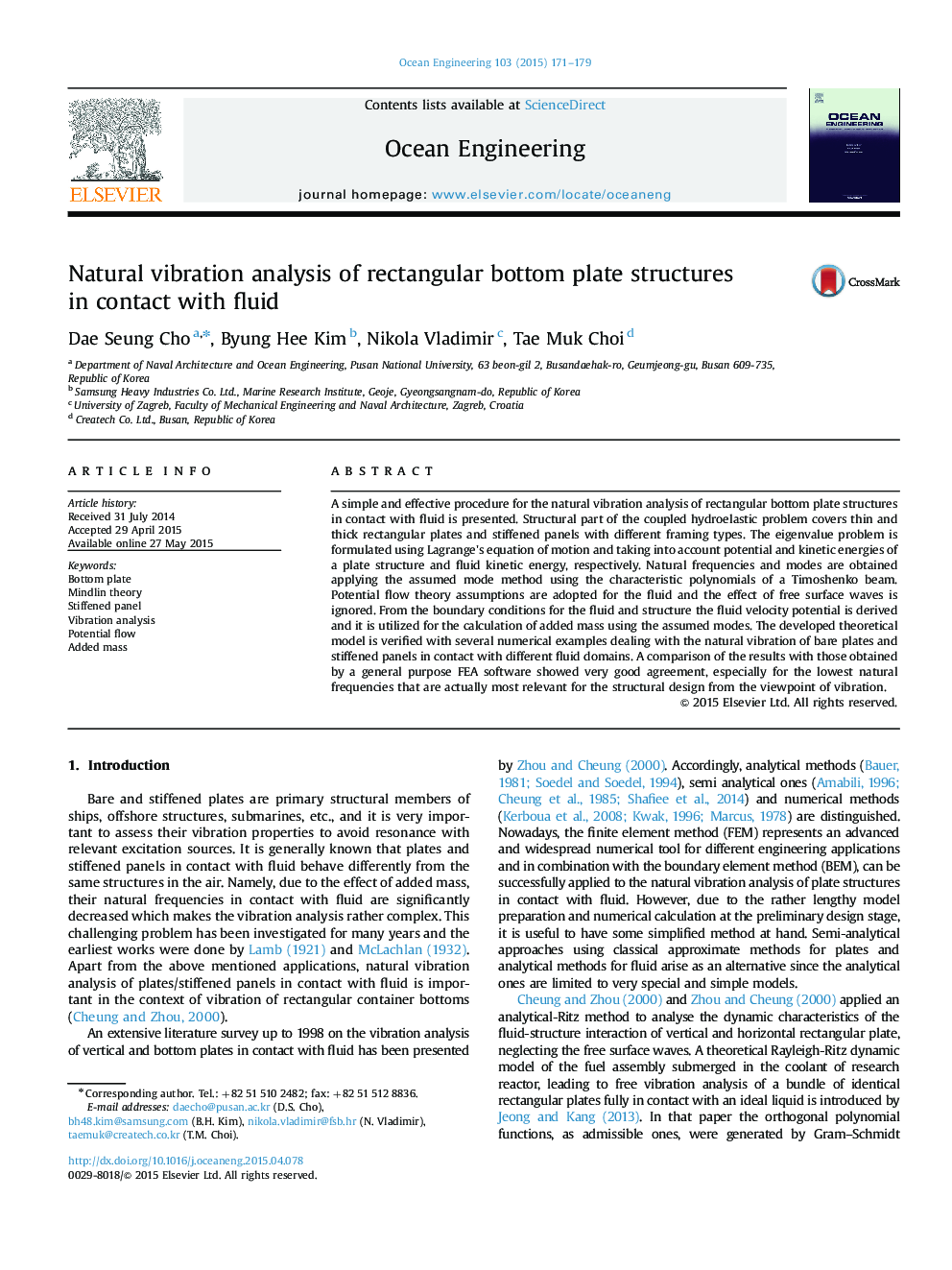| Article ID | Journal | Published Year | Pages | File Type |
|---|---|---|---|---|
| 1725449 | Ocean Engineering | 2015 | 9 Pages |
•A simple procedure for vibration analysis of bottom plate structures is developed.•The method covers thin and thick plates and stiffened panels with various framings.•Assumed mode method is used and potential theory is adopted for the fluid.•The method gives very accurate results compared with general purpose FEA software.
A simple and effective procedure for the natural vibration analysis of rectangular bottom plate structures in contact with fluid is presented. Structural part of the coupled hydroelastic problem covers thin and thick rectangular plates and stiffened panels with different framing types. The eigenvalue problem is formulated using Lagrange׳s equation of motion and taking into account potential and kinetic energies of a plate structure and fluid kinetic energy, respectively. Natural frequencies and modes are obtained applying the assumed mode method using the characteristic polynomials of a Timoshenko beam. Potential flow theory assumptions are adopted for the fluid and the effect of free surface waves is ignored. From the boundary conditions for the fluid and structure the fluid velocity potential is derived and it is utilized for the calculation of added mass using the assumed modes. The developed theoretical model is verified with several numerical examples dealing with the natural vibration of bare plates and stiffened panels in contact with different fluid domains. A comparison of the results with those obtained by a general purpose FEA software showed very good agreement, especially for the lowest natural frequencies that are actually most relevant for the structural design from the viewpoint of vibration.
